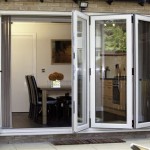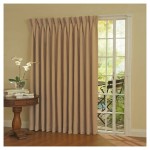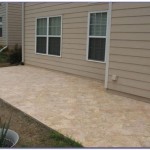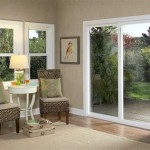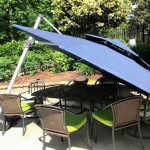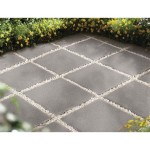Create The Perfect Patio Door: A Comprehensive Guide
Patio doors serve as a vital link between indoor and outdoor living spaces. They offer natural light, ventilation, and easy access to patios, decks, and gardens. Choosing the right patio door involves careful consideration of various factors, including material, style, energy efficiency, security, and aesthetic appeal. This article provides a comprehensive guide to assist in creating the perfect patio door solution for individual needs and preferences.
Understanding Patio Door Styles and Operation
The selection of a patio door style often forms the foundation of the entire project, influencing both the functionality and the visual character of the space. Different styles cater to varying spatial requirements and aesthetic inclinations. Common style options include sliding patio doors, hinged (French) patio doors, bifold patio doors, and multi-slide patio doors. Each offers distinct advantages and inherent limitations that must be carefully weighed against the available space and desired functionality.
Sliding Patio Doors: These doors, also known as gliding doors, operate on a track, allowing one or more panels to slide horizontally past a fixed panel. This space-saving design makes them ideal for rooms with limited swing space. Sliding patio doors are typically more economical than other styles and offer wide views. However, the opening is limited to the width of one panel, and the track can accumulate debris, requiring periodic cleaning for smooth operation.
Hinged (French) Patio Doors: French patio doors consist of two panels that swing open, either inward or outward, from a central point. They offer a classic, elegant look and provide a wider opening than sliding doors. French doors can enhance the architectural character of a home, but require sufficient clearance for the swinging panels, potentially occupying valuable indoor or outdoor space. Weatherstripping can also be a concern with some models, potentially affecting energy efficiency.
Bifold Patio Doors: Bifold doors, also known as folding doors, consist of multiple panels that fold and stack to one or both sides, creating a wide, unobstructed opening. They are a popular choice for connecting indoor and outdoor living areas and offer maximum flexibility. Bifold doors can be more expensive than other styles and require a sturdy header to support the weight of the panels. The complexity of the mechanism can also lead to higher maintenance needs.
Multi-Slide Patio Doors: Similar to sliding doors, multi-slide doors consist of multiple panels that slide and stack against each other, creating an expansive opening. These doors are often used for large openings and can create a seamless transition between indoor and outdoor spaces. Multi-slide doors can be quite expensive and require professional installation due to their size and complexity.
The choice of patio door style should be informed by a thorough assessment of the intended use, available space, budget constraints, and desired aesthetic.
Material Selection: Durability and Energy Efficiency
The material used to construct a patio door directly impacts its durability, energy efficiency, maintenance requirements, and overall cost. Common material choices include vinyl, wood, aluminum, fiberglass, and composite materials. Each material possesses unique characteristics that influence its suitability for different climates and architectural styles.
Vinyl: Vinyl patio doors are a popular choice due to their affordability, low maintenance requirements, and energy efficiency. Vinyl is resistant to rot, corrosion, and insects, and requires minimal upkeep. However, vinyl may not be as aesthetically appealing as other materials and can be prone to fading or warping in extreme temperatures. Its structural integrity may also be lower compared to wood or fiberglass.
Wood: Wood patio doors offer a classic, elegant look and excellent insulation. Wood can be stained or painted to match any décor and provides a warm, natural feel. However, wood requires regular maintenance to prevent rot, insects, and water damage. It is also more expensive than vinyl or aluminum. The type of wood used will also affect its resistance to the elements and durability over time.
Aluminum: Aluminum patio doors are strong, durable, and lightweight. Aluminum is resistant to corrosion and requires minimal maintenance. However, aluminum is a poor insulator and can conduct heat and cold, leading to energy inefficiency. Thermal breaks, which are non-conductive materials inserted into the frame, can improve the energy efficiency of aluminum patio doors. Aluminum is often chosen for its sleek, modern aesthetic.
Fiberglass: Fiberglass patio doors are strong, durable, and energy efficient. Fiberglass is resistant to rot, corrosion, and insects, and can withstand extreme temperatures. Fiberglass can also be painted or stained to match any décor. Fiberglass is generally more expensive than vinyl but offers superior performance and longevity. Its dimensional stability makes it a good choice for large expanses.
Composite Materials: Composite patio doors are made from a combination of materials, such as wood fibers and polymers. They offer the look of wood with the low maintenance of vinyl. Composite materials are resistant to rot, insects, and water damage. However, composite materials can be more expensive than vinyl and may not offer the same level of insulation as wood or fiberglass. The quality and composition of the composite material will impact its performance and lifespan.
When selecting a patio door material, considering the climate, budget, and aesthetic preferences is essential. Investing in higher-quality materials can result in long-term cost savings due to reduced maintenance and improved energy efficiency.
Enhancing Security and Energy Efficiency
Security and energy efficiency are paramount considerations when selecting a patio door. A secure and energy-efficient patio door provides peace of mind, reduces energy consumption, and enhances the overall comfort of the home.
Security Features: Patio doors should be equipped with robust security features to deter intruders. Multi-point locking systems, which secure the door at multiple points along the frame, provide superior security compared to single-point locks. Reinforced frames and shatter-resistant glass further enhance security. Consider installing a security film on the glass for added protection. A visible security system, such as an alarm sensor or security camera, can also deter potential intruders. Deadbolt locks, especially for French doors, provide added security. Ensure proper installation of the locking mechanisms for optimal performance.
Energy Efficiency Measures: Energy-efficient patio doors can significantly reduce energy bills and improve the comfort of the home. Look for patio doors with low-E (low-emissivity) glass, which reduces heat transfer. Gas-filled glass, such as argon or krypton, further improves insulation. Weatherstripping around the frame and panels prevents air leaks. The U-factor, which measures the rate of heat transfer, should be as low as possible. The Solar Heat Gain Coefficient (SHGC), which measures the amount of solar heat that passes through the glass, should be appropriate for the climate. In warmer climates, a lower SHGC is desirable to reduce heat gain. In colder climates, a higher SHGC can help to heat the home. Proper installation is crucial to ensure that the energy-efficient features of the patio door are fully realized. Seal any gaps or cracks around the frame with caulk or sealant.
Glass Options: Different glass options can enhance both security and energy efficiency. Tempered glass is stronger than regular glass and shatters into small, blunt pieces if broken, reducing the risk of injury. Laminated glass is composed of two or more layers of glass bonded together with a plastic interlayer, making it more resistant to breakage and providing added security. Tinted glass can reduce glare and heat gain. Reflective glass can provide privacy and reduce solar heat gain. Consider the specific needs and preferences when selecting glass options.
By prioritizing security and energy efficiency, it is possible to create a patio door that enhances the comfort, safety, and value of the home.
Beyond the primary factors discussed above, several other considerations contribute to creating the perfect patio door. These include the hardware selection (handles, hinges, and rollers), screen options (retractable, sliding, or fixed), and the overall aesthetic integration with the existing architectural style. Choosing complementary hardware that matches the home's interior and exterior design enhances the visual appeal. Screen options provide ventilation while keeping insects out, and should be selected based on the level of desired functionality and visibility. Ultimately, the perfect patio door represents a harmonious blend of functionality, aesthetics, security, and energy efficiency, tailored to the specific needs and preferences of the homeowner.

Sliding Patio Doors Br Exploring Configurations

Which Type Of Patio Door Is Best For Your Home Pella

5 Of The Best Patio Doors For 2024 Milgard

Which Type Of Patio Door Is Best For Your Home Pella

5 Of The Best Patio Doors For 2024 Milgard

Popular Patio Doors For Your Home S Architectural Style Pella

The Complete Guide To Patio Doors In 2024 Checkatrade

Best Patio Doors For Your Home The Depot

Best Patio Doors For Your Home The Depot

Popular Patio Doors For Your Home S Architectural Style Pella
Related Posts


